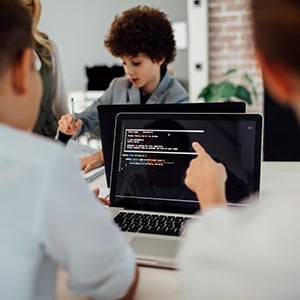
Working with in a classroom with gifted and talented learners gives educators much more freedom in the types of lessons they deliver. A gifted classroom allows children to explore specific interests that may not be appropriate for a large classroom setting.
The online Master of Science in Education with a focus in Gifted, Talented and Creative program from Arkansas State University (A-State) broadens educators’ approach to the learning process and implement innovative teaching strategies. Here are a few ways to engage students in core subject areas while helping them discover their academic potential.
Explore Space
Space exploration has been capturing the imagination of children and adults for many years. Space is no longer solely the environment of brilliant mathematicians who can calculate trajectories or astronauts with the training to pilot spacecraft. Technology has made space exploration available to anyone with internet access, creating unprecedented opportunities for classroom learning.
NASA provides numerous resources for educators interested in utilizing space telescopes for classroom activities. Students can use images from telescopes like Hubble and the James Webb Space Telescope to identify galaxies, stars and planets, and even search for unidentified comets and asteroids. Educators can access interactive tools through NASA’s educational platforms that allow students to explore the universe in engaging ways.
You can use the information and tools to plan a virtual space expedition, plot the flight path of a spacecraft or decide what specialties and skills astronauts and scientists need to colonize space. Students can take virtual tours of spacecraft, compare cosmic objects in different wavelengths of light through Hubble’s online activities and explore space history through interactive timelines. The only limits to creating space-themed projects for your gifted students are your imagination and their interest in space.
Virtual Archaeology
Archaeology was once an exotic profession that required traveling to distant lands and enduring harsh conditions to make any notable discoveries. While that is still the backbone of the field, technology has made archaeological discoveries accessible to everyone. Google Earth and other open-source mapping platforms have enabled students and amateur archaeologists to make remarkable finds.
This process can begin in the classroom using Google Earth. Have students choose a civilization, time period or geographic area, and then research the most relevant coordinates on Google Earth. Students can build an archaeological record of their findings, evaluating patterns, geographic features and architecture while investigating anything unusual they locate. Google Earth’s creation tools allow students to add placemarks, text and multimedia content to their projects, bringing their discoveries to life.
Explore Creative Writing Projects
Telling a story is a core part of human experience, but very few people are taught the art of storytelling in structured ways. Creative writing challenges can help students develop their narrative skills while building confidence in their abilities. Various writing programs and platforms offer year-round opportunities for students to practice extended creative writing projects.
Even for a gifted student, writing a novel-length work may seem to be a daunting task. Teachers can customize challenges to fit their unique classroom needs, adjusting word count goals and time frames to a quarter, a semester or an entire school year. In addition to gaining valuable research skills, students will also work on their writing skills, time management and organizational abilities.
Learn to Code
Coding computer apps, games and websites is rapidly becoming one of the most popular career fields. There are applications for computer coding in math, science and the humanities. Students can explore almost any interest through coding, from creating interactive stories to designing games that solve real-world problems.
Organizations like Code.org provide comprehensive, standards-aligned computer science courses that are free for educators and students. The platform offers curriculum for grades K-12, including courses in web development, game design, artificial intelligence and more. Code.org’s 2024-2025 curriculum includes updated modules on AI literacy, game design and modern web development practices. Students can learn through hands-on projects that blend creativity with technical skills, preparing them for an increasingly digital world.
Work on Wall Street
When students discuss their favorite classes, they usually describe those that had projects that brought concepts to life for them. Writing a play in their English class, running a school store as part of a math class, or building a scale model of the pyramids in their social studies course are memorable learning experiences. The Stock Market Game allows students to become fully immersed in the world of finance, providing hands-on experience with real market conditions. They will gain a better understanding of finance, financial trends and how world events cause fluctuations in the market.
The Stock Market Game, which has served nearly 20 million students since 1977, gives teams the opportunity to invest $100,000 in virtual cash in stocks, bonds and mutual funds. Students work together to manage their portfolios, conduct research on companies, analyze market trends and make informed investment decisions. The game operates using real-time market data, giving students an authentic experience of how financial markets function.
How Your Classroom Can Change
A gifted and talented classroom should not be like all the other classes students attend. While reading and lecturing models are necessary for large classes and standardized learning programs, the gifted program must evolve outside the box and challenge students in new and interesting ways.
These innovative approaches help students develop critical thinking skills, creativity and real-world problem-solving abilities. Advanced training provides educators with the tools and strategies needed to create enriching learning environments that nurture exceptional talent.
Learn more about A-State’s online MSE in Gifted, Talented, and Creative program